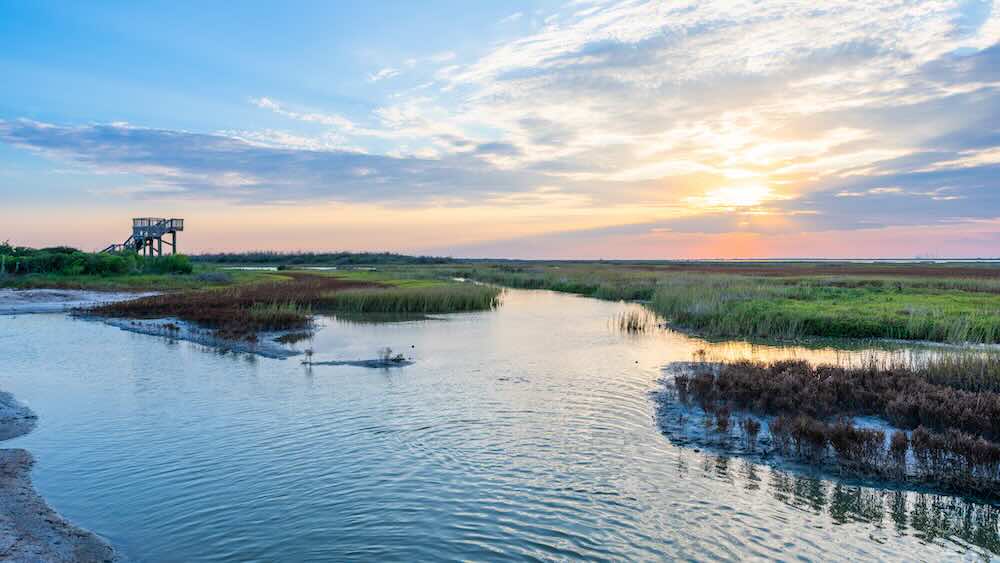


Hospitality professionals who work all along the Texas Gulf Coast will gather to collaborate on regenerative tourism practices.
Next month, the inaugural two-day Turning the Tide regenerative tourism summit will be held in Port Aransas, Texas, designed to “demystify regenerative tourism, making its benefits clear, actionable, and inspiring to travelers and stakeholders alike,” according to the website for the event.
We reached out to Visit Port Aransas to learn more about the conference. Our questions were answered by Visit Port Aransas President and CEO Brett Stawar via email.
How did the idea of a regenerative tourism conference hosted by your DMO come about?
In 2024, the Visit Port Aransas team embarked on a months-long process to define a strategic plan that would reflect our commitment to becoming the most sustainable destination on the Gulf Coast. The plan was named “Envision Port Aransas,” and it called for a sustainable coastal tourism program. How could we become known as a sustainable tourism destination ourselves and how could we share that knowledge with others to lead to a better Gulf Coast? Turning the Tide is the brainchild of our attempt to answer those questions.
Brett Stawar
What is the overall goal of the event and how is it being funded?
The overall goal is to position the Gulf Coast as a leading region in thoughtful, sustainable, and truly regenerative travel, built on the foundation laid at this event. Attendees will pay a registration fee to help offset costs, but the majority of the funding will come through sponsorships. We wanted to make this conference an affordable and accessible time of learning for any who wish to further sustainable initiatives. Our main backing sponsor is Madden Media, Visit Port Aransas’ advertising agency of record. We are grateful for their dedication to the future of the tourism industry. We also have support from the University of Texas Marine Science Institute, where the event is being held.
Tell us about your participants.
Our goal is to have a mix of tourism industry professionals, including destination marketing, municipality, and parks and recreation representatives from the Gulf Coast. We have an attendance cap of 50 people, and we are hoping to get an array of individuals from across the entire Gulf Coast.
A conference like Turning the Tide is a prime opportunity to provide not only education, but also camaraderie. Getting people together in the same space and time allows for free flow of information. There are as many commonalities between Gulf Coast destinations as there are differences, and somewhere in those commonalities lies the future of regenerative tourism.
- Claim or renew your subscription to Convene.
- Want deep-dive insights on events delivered to your inbox? Sign up for our newsletters.
How will the event itself be an example of taking a regenerative or circular approach? What sustainability initiatives will be included in the execution of the event?
Beyond understanding the framework for regenerative tourism, we will identify concrete next steps for regional collaboration, funding, and resource mobilization. We really want to emphasize active participation and the development of strategies that can be implemented effectively.
We are aiming to make the event itself as sustainable as possible. Our closing event, “The Last Light,” will take place at the Lydia Ann Lighthouse and will feature a menu entirely sourced from Port Aransas and the South Texas area. Local chef Matt Axtell will serve crab caught right off the lighthouse, oysters from Texas Clear Water Oyster Gardens, and more. From reusable name tags to a partnership with “Fill It Forward,” a reusable water company that will donate to the Amos Rehabilitation Keep with every fill, we aim to practice what we preach.
Can you provide one or some concrete examples of what a regenerative tourism experience would look like on the Gulf Coast and how it would differ from an experience that doesn’t prioritize sustainability?
Regenerative tourism goes far beyond the environment, though that of course is always top of mind on the Gulf Coast. In many cases, regenerative tourism comes down to listening. You have to listen to your community, to your experts, and to your research. An experience that doesn’t prioritize sustainability would emphasize “taking” instead of “giving.”
Regenerative tourism looks like inviting visitors with shared values who have a respect for the local way of life, the environment, and the businesses they patronize as opposed to visitors who have a carefree, “I’m on vacation so I can do what I want” attitude. In Port Aransas, for example, that can look like inviting visitors to take part in volunteer opportunities at the Port Aransas Community Theatre or beach cleanups with the University of Texas Marine Science Institute, ecotourism experiences like those at the Port Aransas Nature Preserve, and even fishing trips with expert guides who emphasize sustainable practices like fishing line recycling, Texas Parks and Wildlife guidelines, and video catch and release.
How is group business — using a regenerative approach to hosting conferences — part of the conversation?
There will be group sales and meetings focus within several presentations, specifically included in basics in regenerative planning with examples of volunteer opportunities and best practices for group and meetings markets. Also, the panel will be discussing these topics with a lens on what the industry (hotels/restaurants/group organizers) can do to support and engage in regenerative practices.
From a business perspective, conference groups are a way for highly seasonal destinations like those on the beach to keep the doors open and the lights on in the off season. It allows for our restaurant workers to be employed yearlong instead of for three months, and for our town’s residents to continue to enjoy amenities beyond the summer season.
Is Turning the Tide a way of showcasing Port Aransas as a leader in regenerative tourism as well as a way of collaborating with other destinations in the region so that a rising tide lifts all boats? (Couldn’t help myself.) In other words, what about destinations that are competing for the same business? Is the overarching goal a legacy that benefits the entire region?
Cliche as it may sound, a rising tide lifts all boats is absolutely the mindset here. We envision this conference as a way for all Gulf Coast communities to work together towards regenerative tourism. A regenerative future takes more than Port Aransas, but we are grateful to be able to bring together some of the pieces to help us all head in the right direction. Gulf Coast destinations may overlap sometimes when it comes to competitive markets, but there will be no destinations worth visiting if we don’t all commit to a future where sustainability is the standard, not a “nice to have.”
Please give us a taste of the content you will be exploring.
We’re grateful to be inviting some of the nation’s top leaders in regenerative tourism down to the Gulf Coast. Aaron Salā, President & CEO of the Hawai‘i Visitors and Convention Bureau, will dive into the work Hawai’i has done to preserve both environmental and cultural assets and expand on his views of the future of tourism. Cathy Ritter of Better Destinations, LLC, a top voice in sustainable tourism, will cover the basics of regenerative planning. Nate Wyeth with Visit Bend, Oregon, will cover Bend’s “Leave No Trace” campaign and how destination organizations can market with purpose.
We will also have several local environmental experts, like Katie Swanson with the Mission-Aransas National Estuarine Research Reserve at the University of Texas Marine Science Institute, and Jace Tunnell with the Harte Research Institute, do some level setting for the challenges and opportunities faced by the Gulf Coast.
Michelle Russell is editor in chief of Convene







